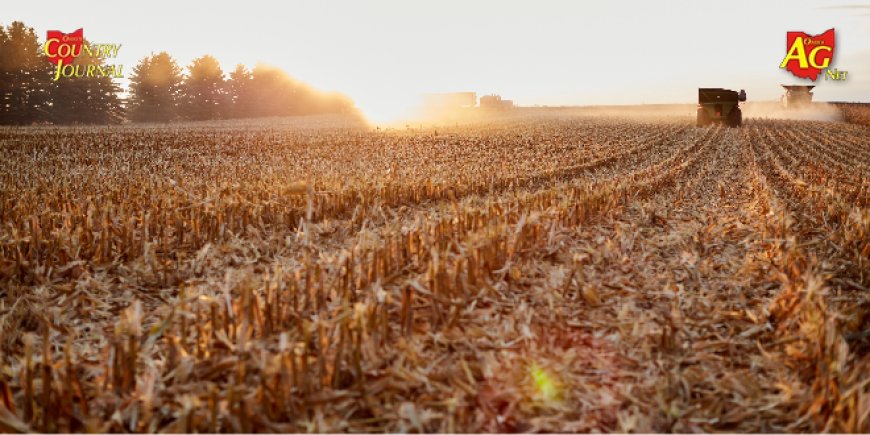USDA offers assistance to protect privately-owned agricultural lands – Ohio Ag Net | Ohio’s Country Journal
USDA offers assistance to protect privately-owned agricultural lands ... Ohio's Country Journal and Ohio Ag Net

The U.S. Department of Agriculture’s Ohio Natural Resources Conservation Service (NRCS) Accepting Applications for Agricultural Land Easements Program

Introduction
The U.S. Department of Agriculture’s Ohio Natural Resources Conservation Service (NRCS) is currently accepting applications from landowners and organizations interested in protecting farmlands and grasslands. Through the Agricultural Land Easements program (ALE), financial and technical assistance is available to eligible partners. The deadline to receive funding for fiscal year 2024 is December 15, 2023.
About the ALE Program
The ALE program provides funding to conservation partners for the purchase of conservation easements on private working lands. Eligible partners include Indian tribes, state and local governments, and non-governmental organizations with farmland or grassland protection programs.
Sustainable Development Goals (SDGs)
- Goal 2: Zero Hunger – Protecting farmlands ensures the long-term viability of the nation’s food supply.
- Goal 15: Life on Land – Preventing the conversion of productive working lands to non-agricultural uses helps preserve biodiversity and ecosystems.
Eligible Land and Prioritization
Land eligible for agricultural easements includes cropland, rangeland, grassland, pastureland, and nonindustrial private forest land. NRCS will prioritize applications that protect agricultural uses and related conservation values of the land, as well as those that maximize the protection of contiguous acres devoted to agricultural use.
Enrollment Process
To enroll land through the Agricultural Land Easements program, NRCS enters into agreements with eligible partners. Landowners are not required to apply directly to the program. They are encouraged to visit the Ohio NRCS ALE website or contact Abby McClain at Abigail.Mcclain@usda.gov to find an eligible partner to hold conservation easements.
Conclusion
The Agricultural Land Easements program provides a valuable opportunity for landowners and organizations to contribute to the preservation of farmlands and grasslands. By protecting these lands, we can work towards achieving the Sustainable Development Goals of Zero Hunger and Life on Land.
SDGs, Targets, and Indicators
1. Which SDGs are addressed or connected to the issues highlighted in the article?
- SDG 2: Zero Hunger
- SDG 15: Life on Land
The article discusses the Agricultural Land Easements program, which aims to protect farmlands and grasslands. This directly relates to SDG 2, which focuses on achieving zero hunger by promoting sustainable agriculture and ensuring food security. Additionally, the program also contributes to SDG 15, which aims to protect, restore, and promote sustainable use of terrestrial ecosystems.
2. What specific targets under those SDGs can be identified based on the article’s content?
- Target 2.4: By 2030, ensure sustainable food production systems and implement resilient agricultural practices that increase productivity and production.
- Target 15.1: By 2020, ensure the conservation, restoration, and sustainable use of terrestrial and inland freshwater ecosystems and their services.
The Agricultural Land Easements program helps in achieving Target 2.4 by protecting farmlands and grasslands, which are essential for sustainable food production systems. It also contributes to Target 15.1 by conserving these ecosystems and ensuring their sustainable use.
3. Are there any indicators mentioned or implied in the article that can be used to measure progress towards the identified targets?
Yes, the article mentions two indicators that can be used to measure progress towards the identified targets:
- Number of conservation easements purchased on private working lands
- Amount of farmland and grassland protected through the program
These indicators can be used to track the number of conservation easements established and the extent of farmland and grassland protected, providing a measure of progress towards achieving sustainable food production systems and the conservation of terrestrial ecosystems.
4. Table: SDGs, Targets, and Indicators
| SDGs | Targets | Indicators |
|---|---|---|
| SDG 2: Zero Hunger | Target 2.4: By 2030, ensure sustainable food production systems and implement resilient agricultural practices that increase productivity and production. | Number of conservation easements purchased on private working lands |
| SDG 15: Life on Land | Target 15.1: By 2020, ensure the conservation, restoration, and sustainable use of terrestrial and inland freshwater ecosystems and their services. | Amount of farmland and grassland protected through the program |
Behold! This splendid article springs forth from the wellspring of knowledge, shaped by a wondrous proprietary AI technology that delved into a vast ocean of data, illuminating the path towards the Sustainable Development Goals. Remember that all rights are reserved by SDG Investors LLC, empowering us to champion progress together.
Source: ocj.com

Join us, as fellow seekers of change, on a transformative journey at https://sdgtalks.ai/welcome, where you can become a member and actively contribute to shaping a brighter future.







